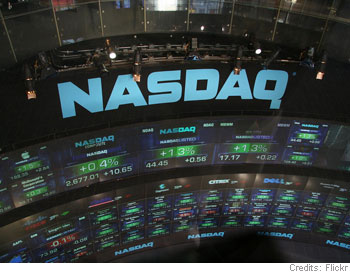 Terry Duffy, the top executive of the CME Group Inc. (CME) said late Tuesday that any proposal the Commodity Futures Trading Commission [CFTC] may develop to deal with high-frequency trading [HFT] — a market trading strategy that allows financial firms to use recursive computational procedures to make markets and extract fractions of profits from tiny market imbalances — shouldn’t be too restrictive.
Terry Duffy, the top executive of the CME Group Inc. (CME) said late Tuesday that any proposal the Commodity Futures Trading Commission [CFTC] may develop to deal with high-frequency trading [HFT] — a market trading strategy that allows financial firms to use recursive computational procedures to make markets and extract fractions of profits from tiny market imbalances — shouldn’t be too restrictive.
DJ: “Everybody has to understand that high-frequency trading is still liquidity,” Duffy said, adding that the CFTC must “be careful in not cutting them off” as it develops its new regulations.
He added that right now about 36% of all volume at CME is HFT and 40% of volume in the E-mini, which is tied to the Standard & Poor’s 500 index, is from high-frequency trading. Equivalent figures in the securities side of the market, he added, are much higher.”
The TABB Group, a consultancy firm, has estimated that computer based trading accounts for more than 70% of US daily equity volume, up from 30% in 2005.
Duffy also said data collected by CME indicated that high-frequency traders of the E-mini were not the “aggressors” during last Thursday’s market plunge. Whatever the cause, the May 6 market freefall, which caused a complete meltdown of liquidity in a five-minute period of time, has prompted regulatory concerns about the role played by high speed trading in the ensuing market meltdown.
CFTC Chairman Gary Gensler mentioned to lawmakers Tuesday that the CFTC is looking into HFT and other market structure issues, but did not provide any specifics in terms of what type of proposal his agency intends to introduce.
- Bulenox: Get 45% to 91% OFF ... Use Discount Code: UNO
- Risk Our Money Not Yours | Get 50% to 90% OFF ... Use Discount Code: MMBVBKSM
Disclaimer: This page contains affiliate links. If you choose to make a purchase after clicking a link, we may receive a commission at no additional cost to you. Thank you for your support!

Leave a Reply